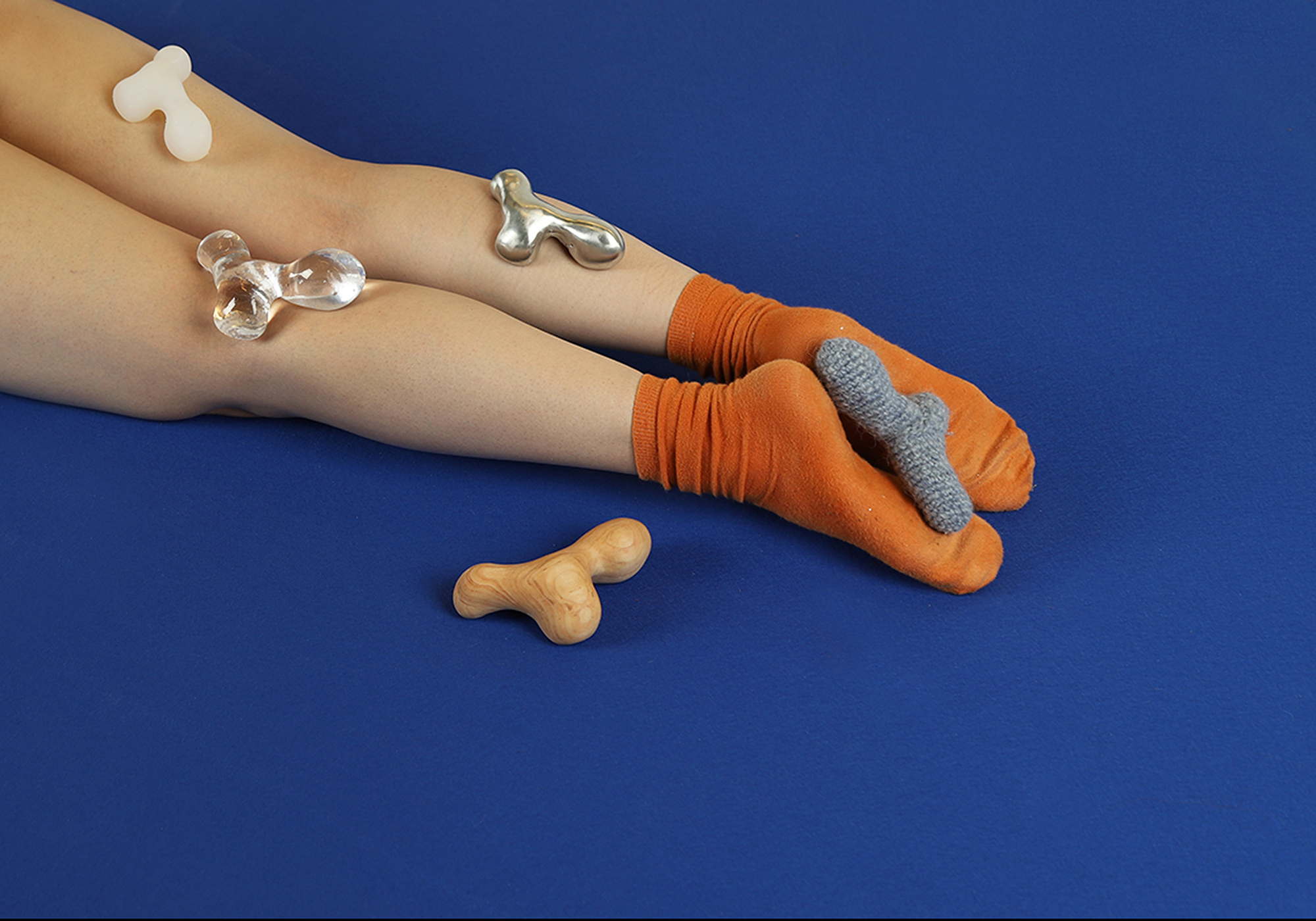
R.O.S.P - Ritual of Sexual Pleasure
’Somewhere beyond right and wrong, there is a garden. I will meet you there’. -Rumi
In patriarchal societies, women’s awareness of their own sexuality is often oppressed. The more we understand our bodies and minds, the more we can express ourselves and build up self-consciousness. How do women perceive their bodies under social structures? How can we improve sex education and teach masturbation to make it more beneficial? What type of haptic solutions and which techniques for masturbation and rituals of sexual pleasure do people find satisfying?
Hence, I started creating tool kits based on techniques from OMGyes.com. My main goal was to explore what kind of tools can make a woman understand and explore her body. According to the participants’ feedback and reports, I was able to create a sex toy and a scenario for the Ritual of Sexual Pleasure. Both of them can be customised according to the user’s preferences.
I hope we can achieve sexual liberation for women and be able to have an open discussion in public. Let’s meet in the garden!
Workshop as a Method - Probes
Probes and prompts are integral to successful interviews. Probes help motivate informants, facilitate the flow of an interview, and elicit information, but not necessarily in the form of a question. The goal is not to learn about the object or place but instead to learn about the informant through the object or place. In essence, the “material probe” triggers a response or memory and can be used in specific and or general ways. According to my intention of sex education and giving materials and knowledge for people to try. I held a workshop that participants got a box of tools “ ROSP Pleasure Box”. Every participant has it as a probe and executes the workshop individually. They will follow the instruction/manual to explore themselves step by step (5 sections) through the probes.
I decided to have five steps based on the researches that I did. I realized that we already have a lot of sex toys in our market. We might be able to buy sex toys but (1) Do you really know what you want? (2) Do we even have the words to describe body parts? (3) Do we know what makes us feel good and gets an orgasm? Hence, the first step that I want to have a sex education for the inner part like clitoris and outer part. Then we will know that we are using the same words to describe. Also, some women don’t know their body parts well. After this step, we will be sure that we are on the same page. I made a few drawings and 3D models illustrate the outer part of the vagina and clitoris. It contains two drawings to demonstrate the name and location of the parts and silicone part with clitoris attached behind it . You can easily see where is the clitoris.
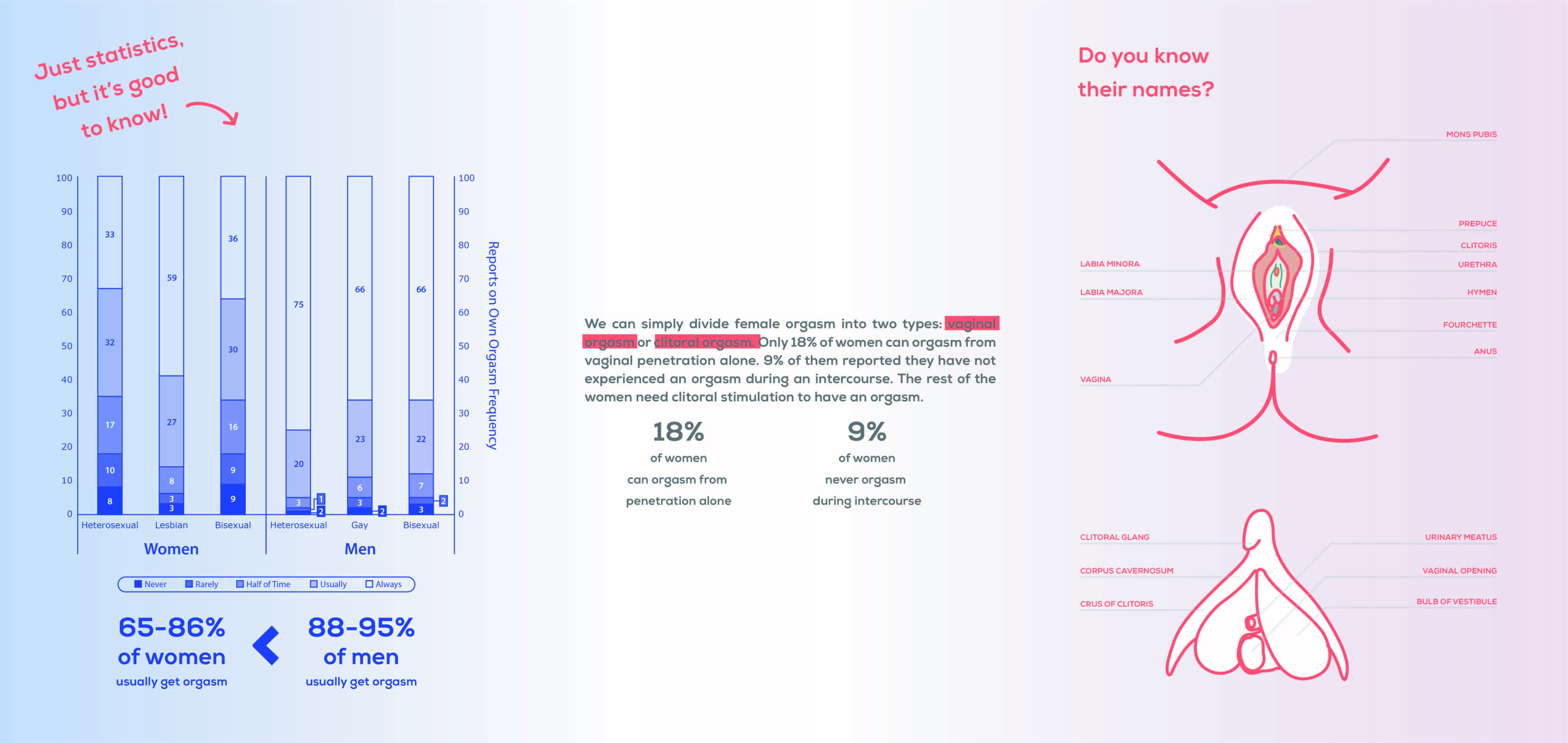
The second step I want participants to explore different materials. It’s not just for the genital part. I also want women can find their erogenous zone and be more curious about themselves. I create a set of probes in the same organic shape. According to the research I did, I make the probes in a size which fits for hands. I chose the materials which are not harmful to the human body like wood, glass, silicone, tin, and wool(crochet) (Figure 12). Those materials also contain different dimensions in surface texture, compliance, and thermal characteristics. It’s also a very nice experience for me to explore different materials in making.
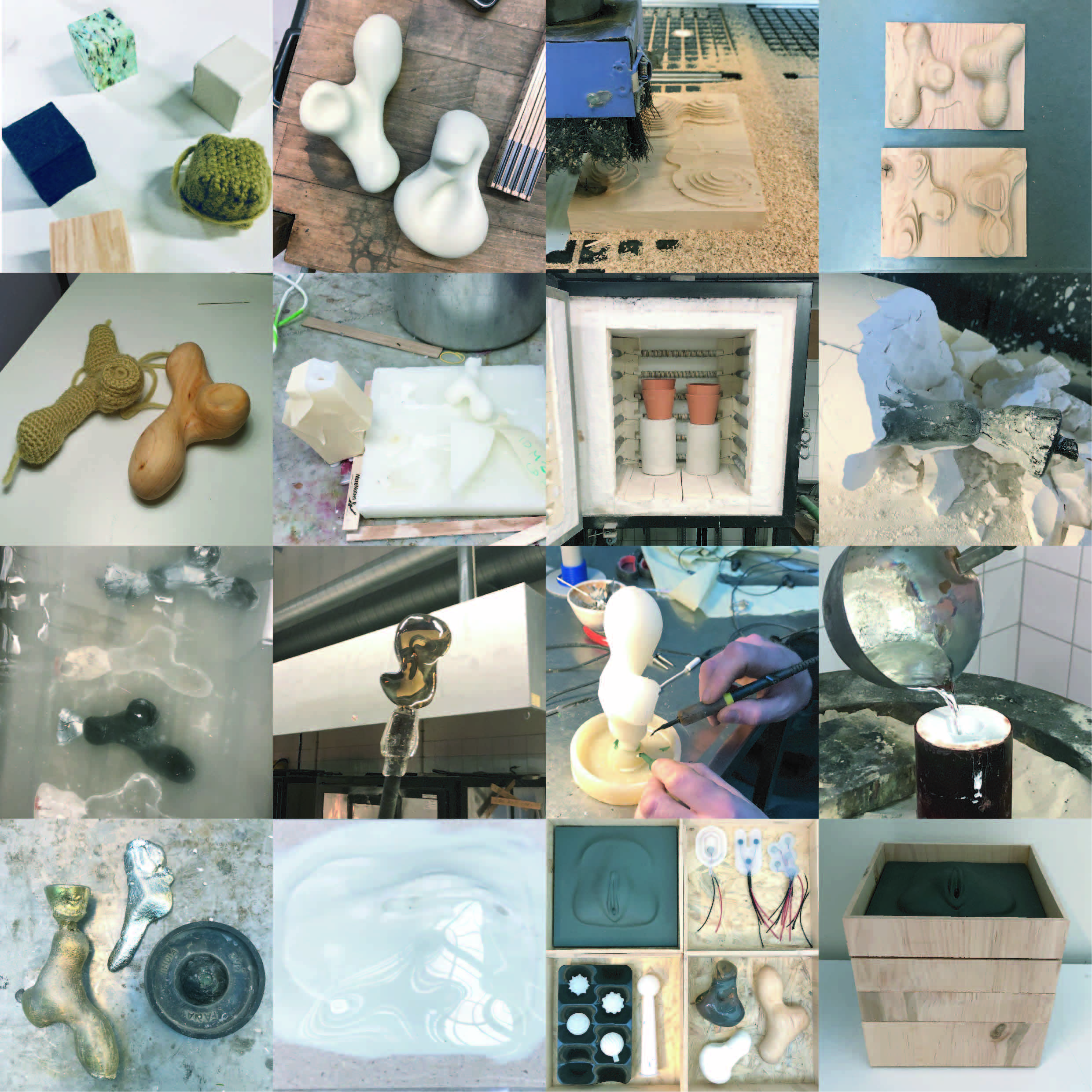
Probes in the making process
The third step (Figure 14), I want to focus on the pattern on the object’s surface. It can provide more stimulation with different haptic quality. Hence, I create 5 different patterns like smooth, sphere, cone, revolve and spiral. The participants get a stick then they can put the balls on the top of stick and test it on their body.
The fourth step, I want to focus on the vibrate pattern on the vagina part. I simplified the techniques (Hinting, Consistency, Accenting, Edging, Surprise, Multiples and Rhythm) from OMGyes.com into three different prototypes of vibrated patterns. Model O, R and W are made of silicone and vibrated motors which are placed in different places to create the vibration pattern (Figure 15). Model O focuses on the clitoris. Model R focuses on both clitoris and labia. Model W vibrates randomly on genitals. Then participants can try which is their favorite vibrate pattern.
The fifth step, I want participant to be able to join the form giving process. Therefore, participants will get 2 cans of moldable plastic to shape a form they like or inspired by this workshop. Polydoh can become soft and moldable in 60C hot water. It’s a reusable, strong, nontoxic and biodegradable material. They can build whatever they want and it also can be an inspiration for me to design the ritual for them.
Final step, I asked them about their favorite music, smell and special need can make them feel good during sex. According to their feedback, I will design customized the ritual of sexual rituals for them. More information will be able to download soon. Stay tuned!
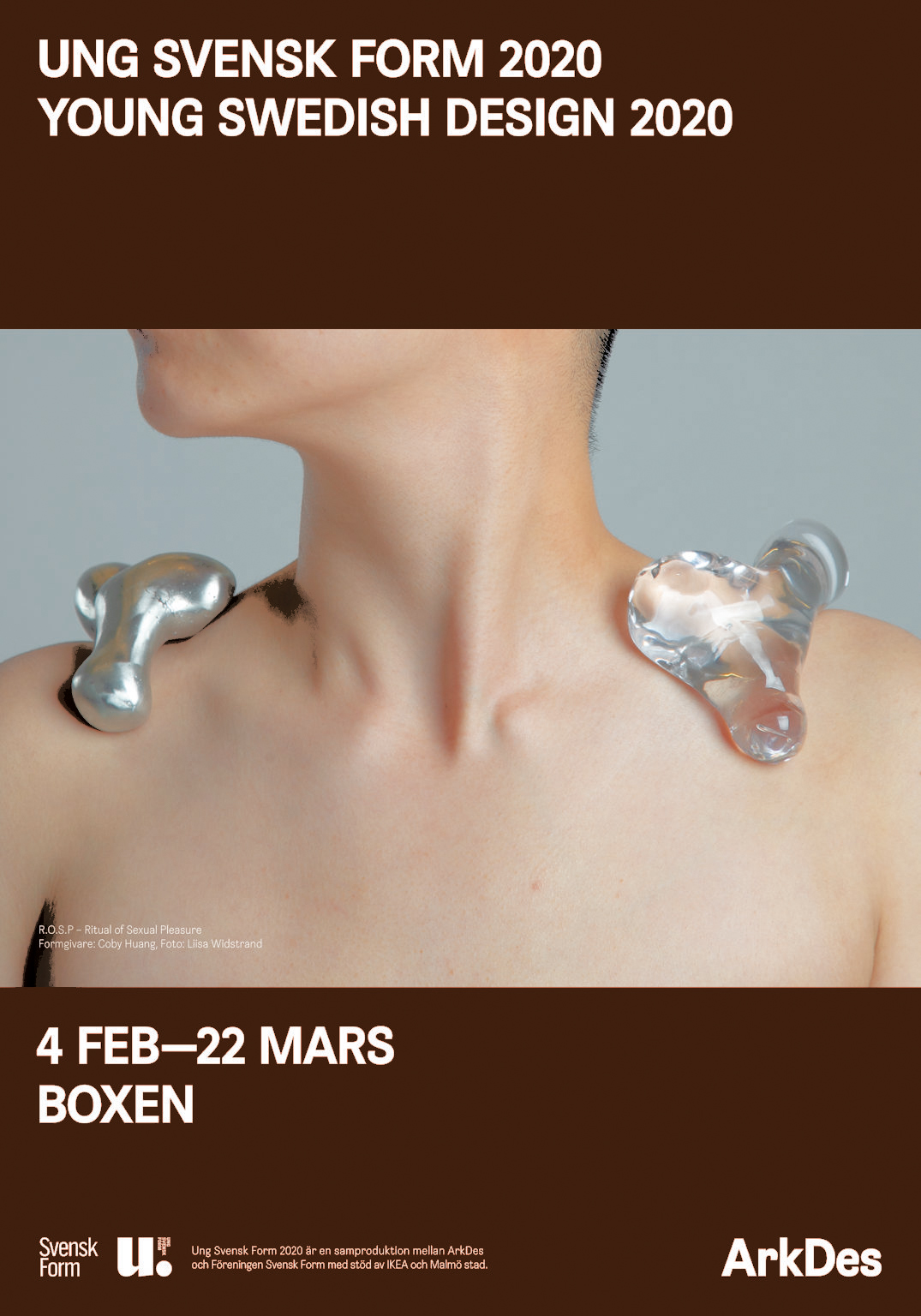
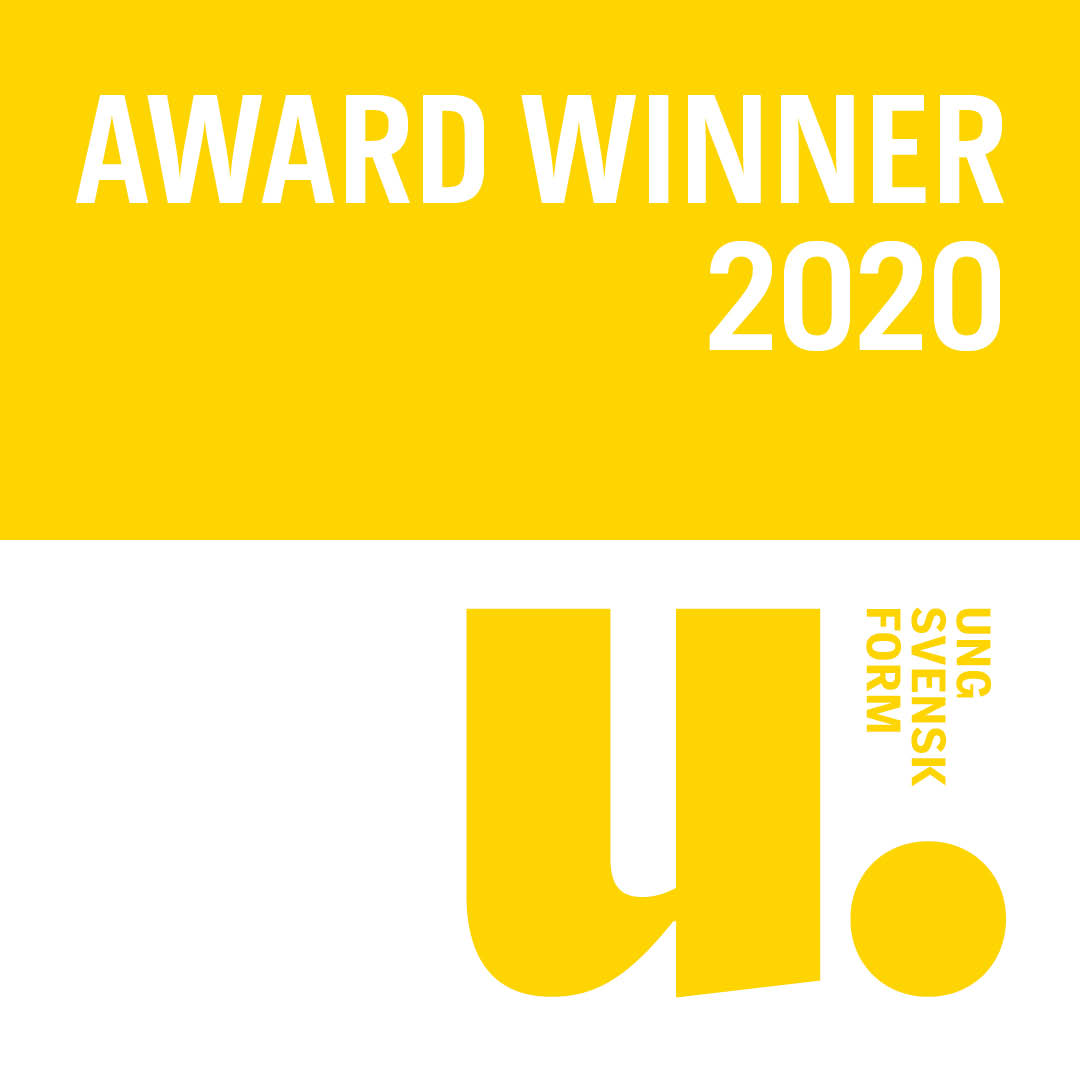
COBY HUANG – R.O.S.P – RITUAL OF SEXUAL PLEASURE
Sex is a subject we learn far too little about. I have therefore developed a series of sex education tools that can be used to learn about and explore your body. My aim is for the objects to invite discussion and exploration relating to the body and sexual health.
Jury citation
The womb is anything but done with in the world of design. Ritual of Sexual Pleasure gives us smartly designed tools for yet another women’s issue that has been made invisible: the orgasm. The panel would particularly like to praise the user-friendliness and the well-executed methodology.
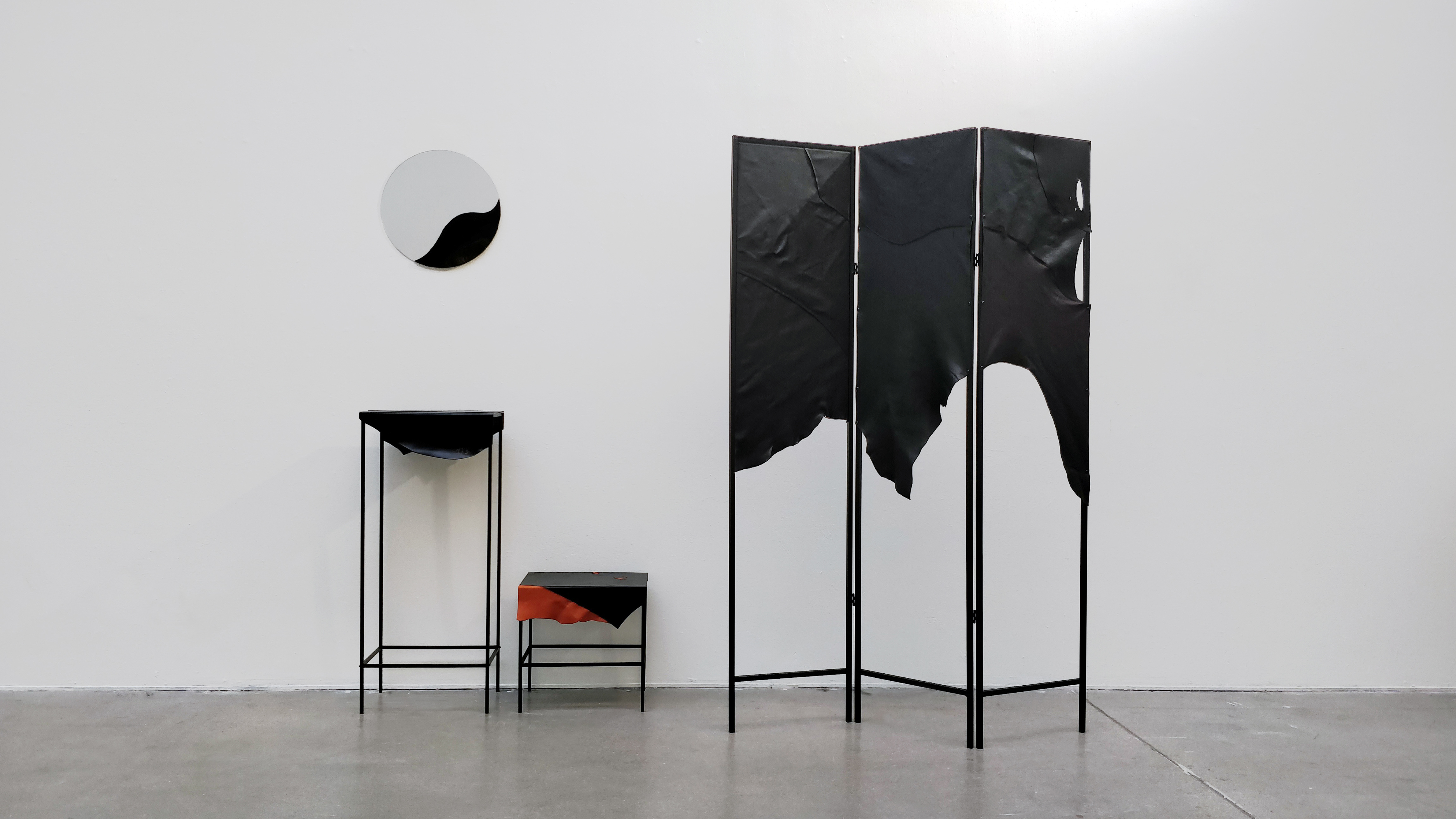

Cow No.173 @ Konstfack
LEATHER is a series of projects that takes on new associations in the setting of the Gnosjö region, and aim to explore expansive possibilities for leather in different conditions and shapes. These are fragments of six different design projects that re-stage the context and usage of leather. Based on the concept of circular economy, the designers have followed separate paths in order to re-adapt and merge the concepts, ideas and language of design with philosophical concerns about consumption and value.
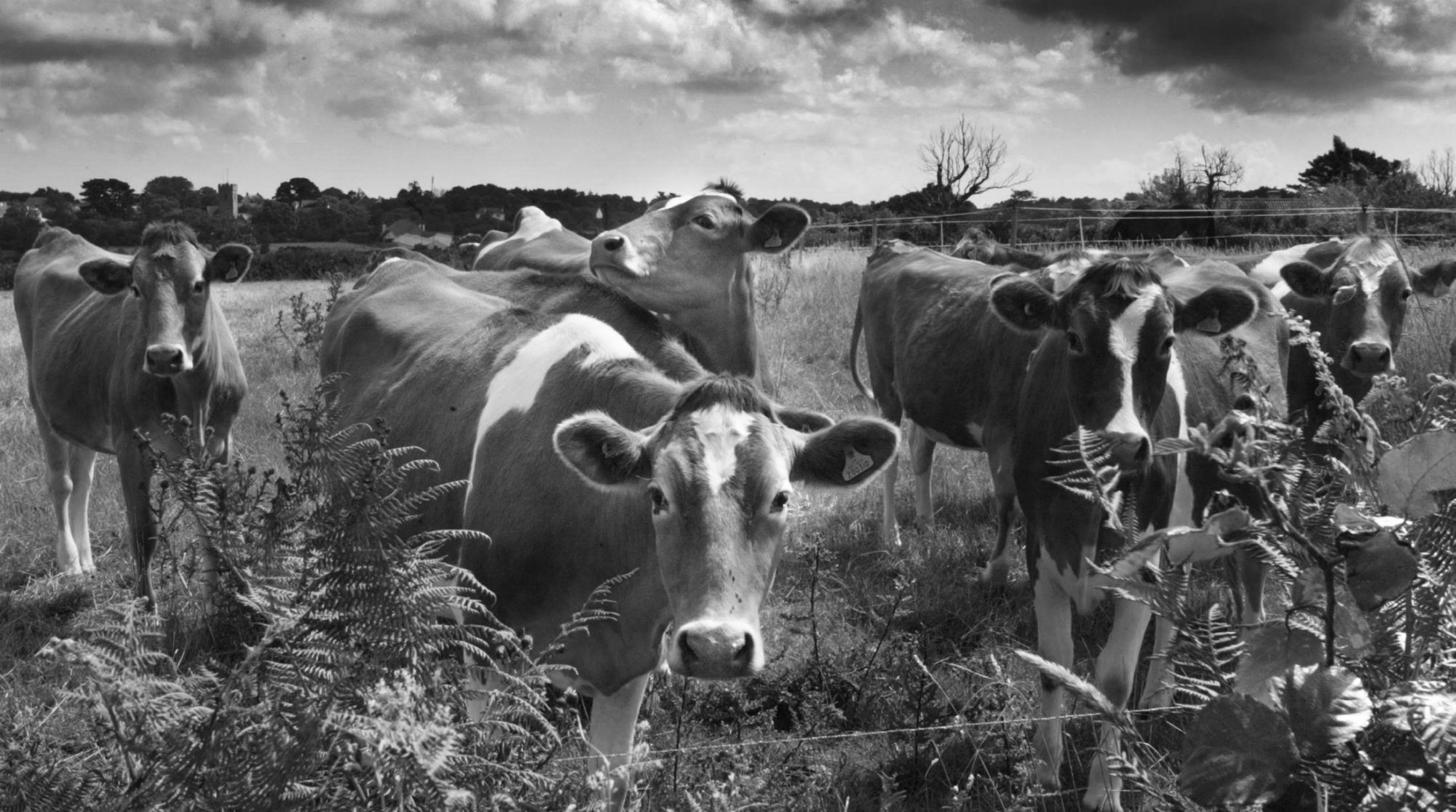
Treat All Animals With Respect // All the animal will die eventually. We shouldn’t just feel guilty when we use the leather. We should show more our respect to those animal and use every pieces without waste it.


Whole Hide // A whole hide shows the original shape from animal. The skin left the trace from the life of animals. But the leather industries try to keep the perfect leather without scars, scratches, holes and fire mark. What’s perfection? What’s beauty?
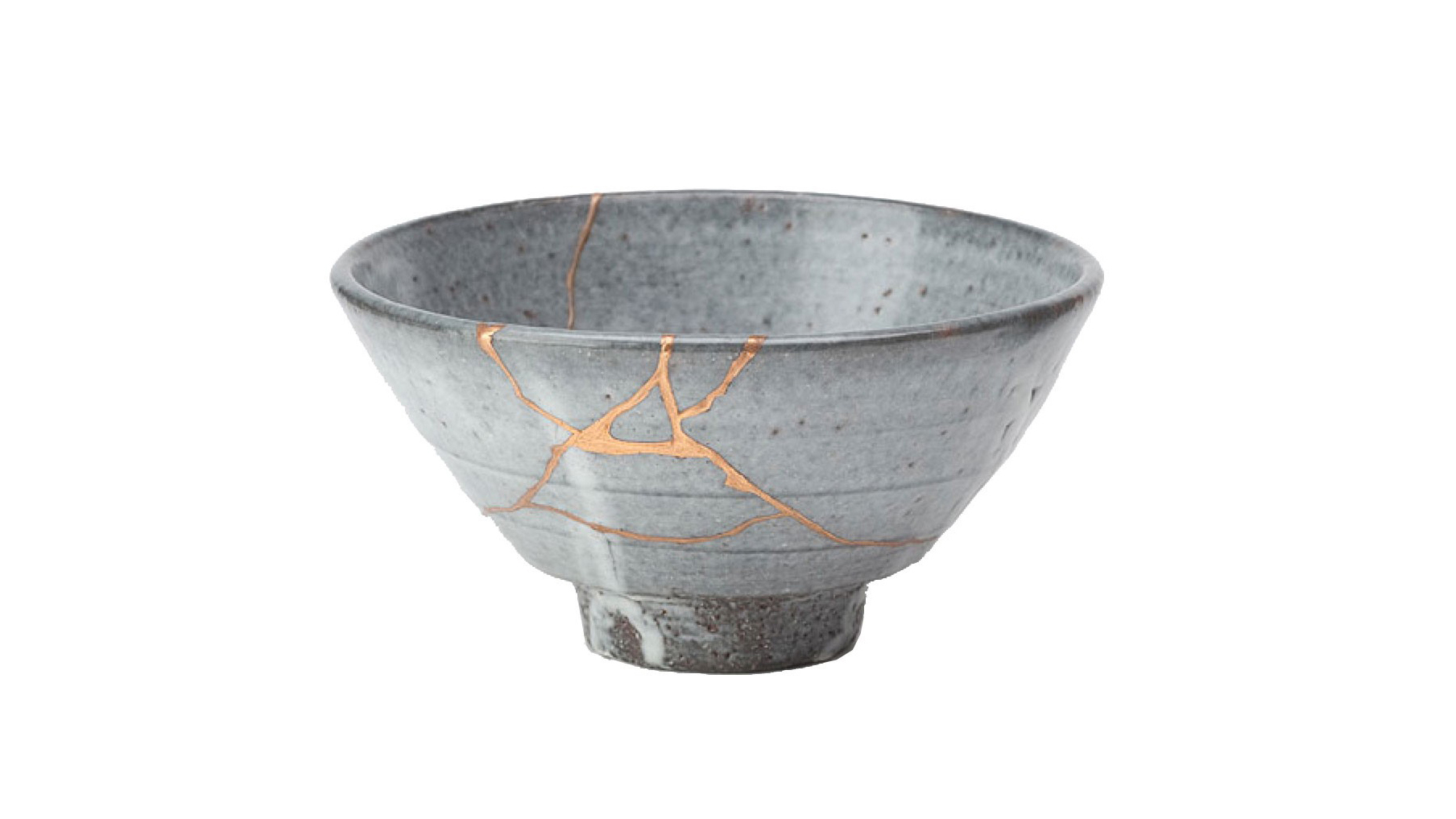
Wabi Sabi // In traditional Japanese aesthetics, wabi-sabi is a world view centered on the acceptance of transience and imperfection. The aesthetic is sometimes described as one of beauty that is “imperfect, impermanent, and incomplete”. It is a concept derived from the Buddhist teaching of the three marks of existence, specifically impermanence, suffering and emptiness or absence of self-nature. Characteristics of the wabi-sabi aesthetic include asymmetry, roughness, simplicity, economy, austerity, modesty, intimacy, and appreciation of the ingenuous integrity of natural objects and processes.


Imperfection // The hole, scras and the edge are not perfect. Roughness and asymmetry in those pieces. It shows the marks of life.


Incomplete // Nothing is complete and perfect. We need to live with it and embrace it.


Impermanent // Life is short but the trace will be left forever.


Repairment Techniques
I used the kintsugi way to highlight the scars and marks. Those can also be a part of the beautiful trace from the creature that sacrificed their lives for us and became an object. And I used patches to repair the holes.
Mobile is as a template to show the technique and highlight the mark on different creatures.

Furniture Seriesfor Hallway
Simplify the structure of furniture and highlight the mark and trace from the leather. Match different types of black leather and keep the shape from the whole hive without trimming it.




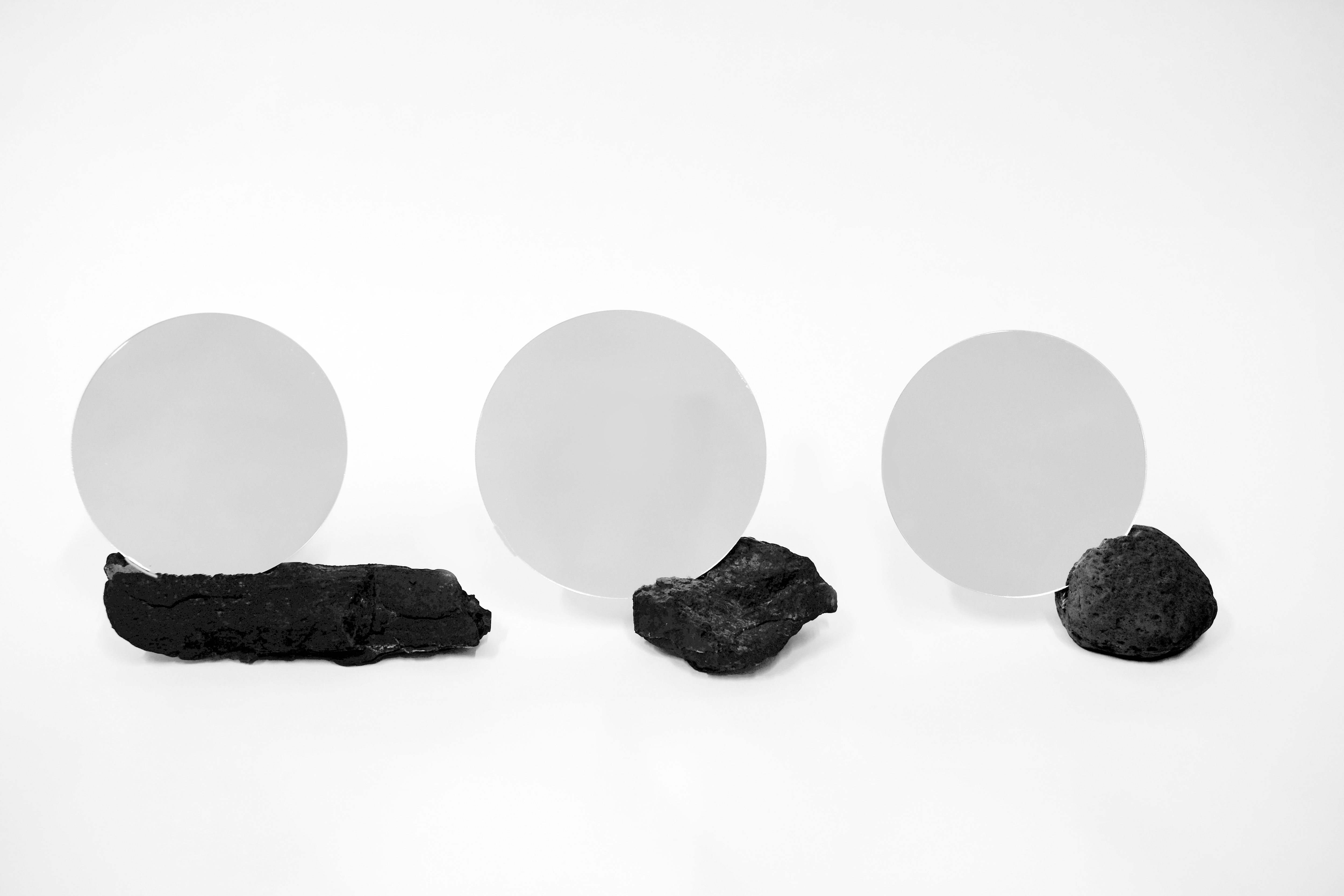
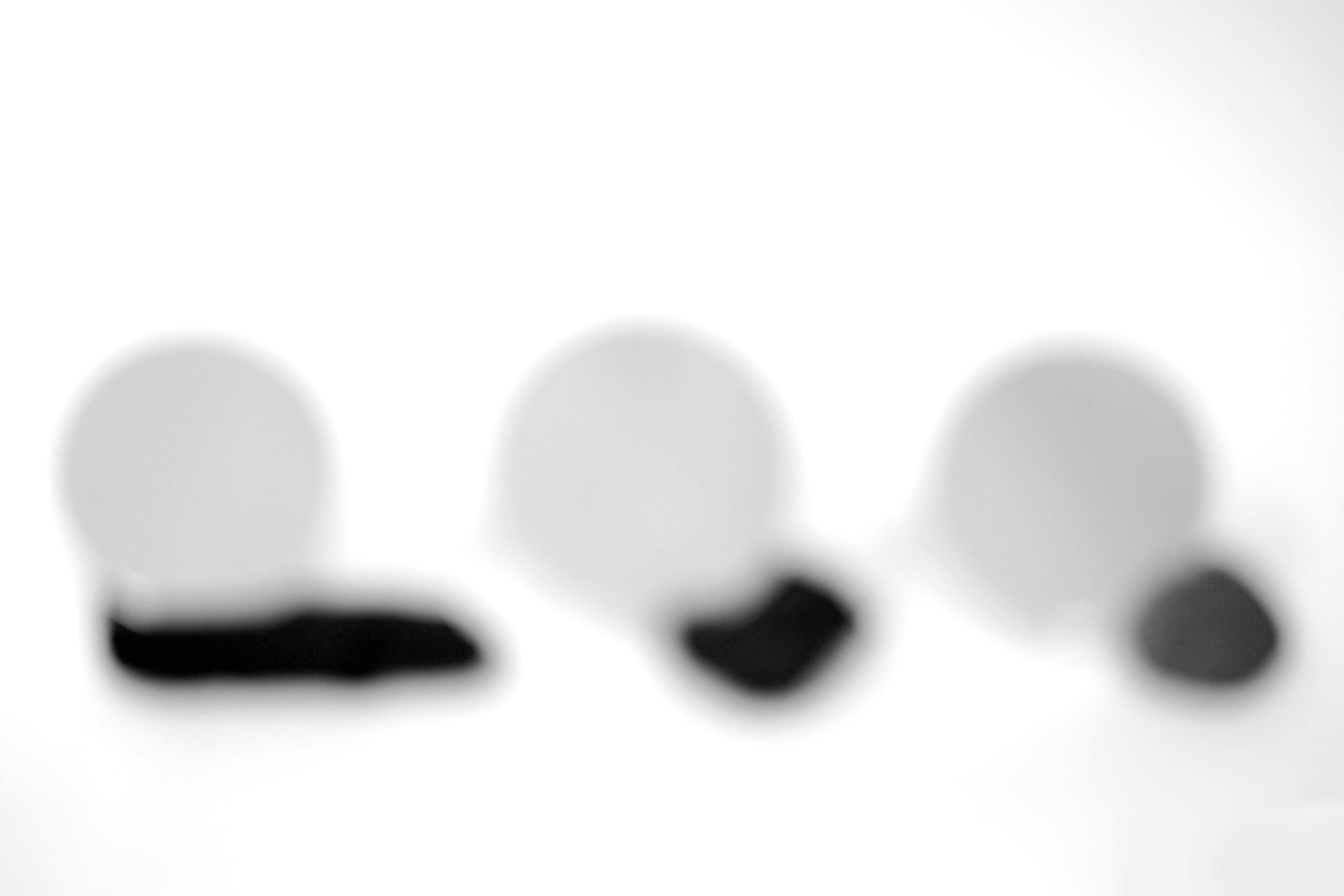
Mirror Mirror @ Konstfack
Check the stones that you can know the part of history of earth.
Slice a piece, make a gap and put a mirror inside.
Show your!
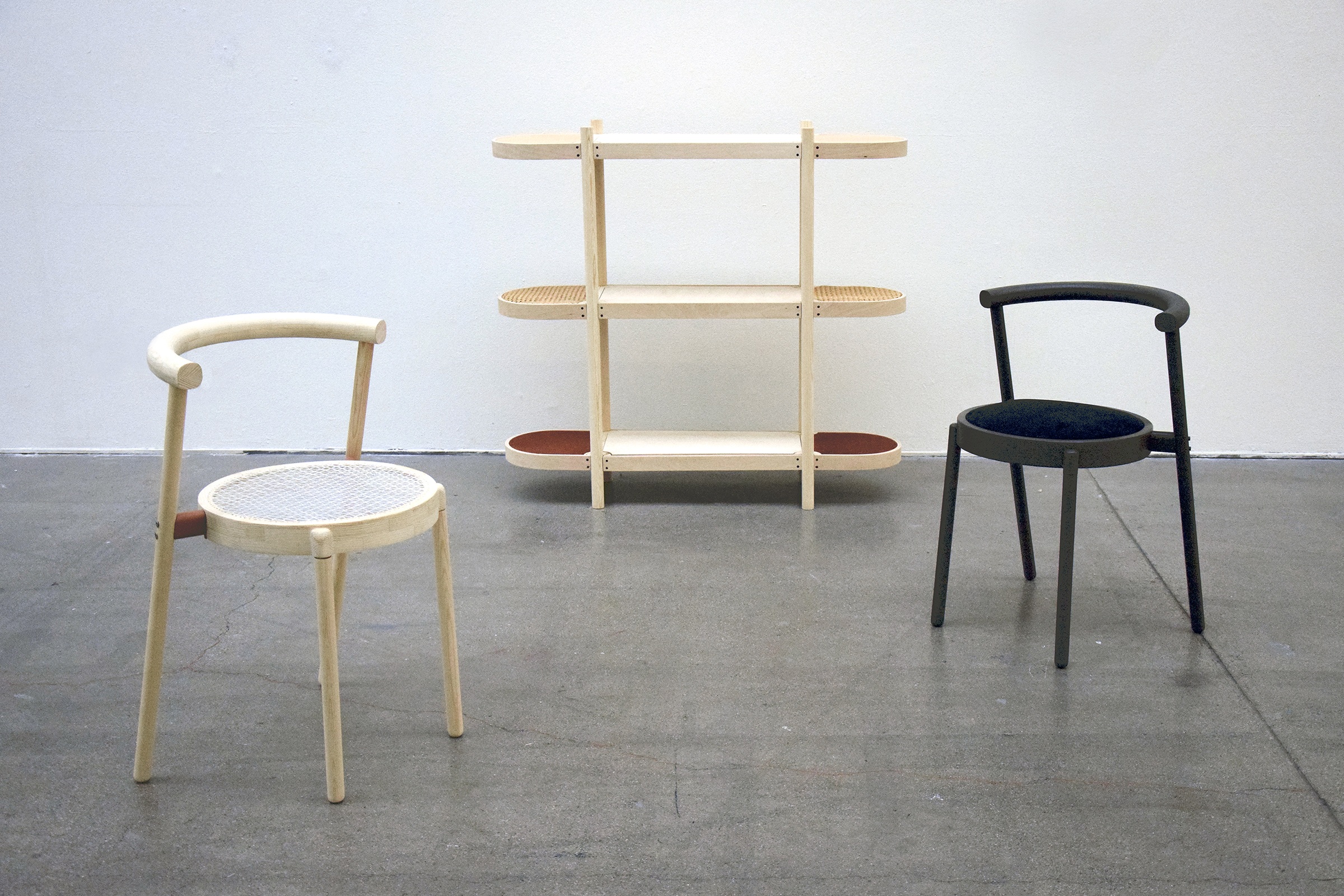
Cloo Series - Chair and Shelf
Our concept is to design heirlooms, objets that people pass down from generation to generation with pride. We believe that a good design should be simple and honest. Sustainability is the thing that all human being have to consider. As designers, we can have different perspectives to look into sustainability. By using materials like rattan, wood, leather or metal, our studio wants to give them a different use, a new meaning or a second life through series of great products.
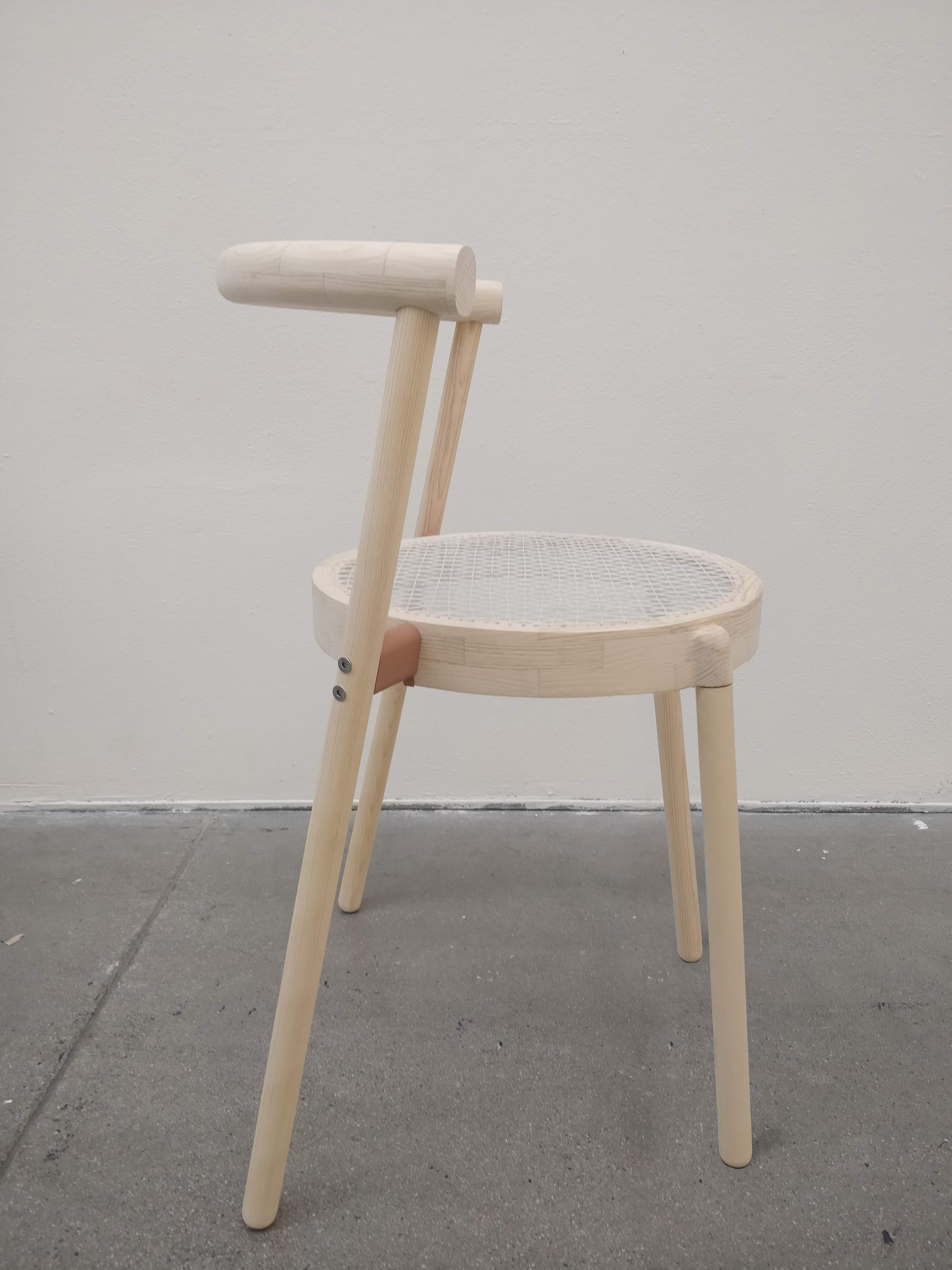

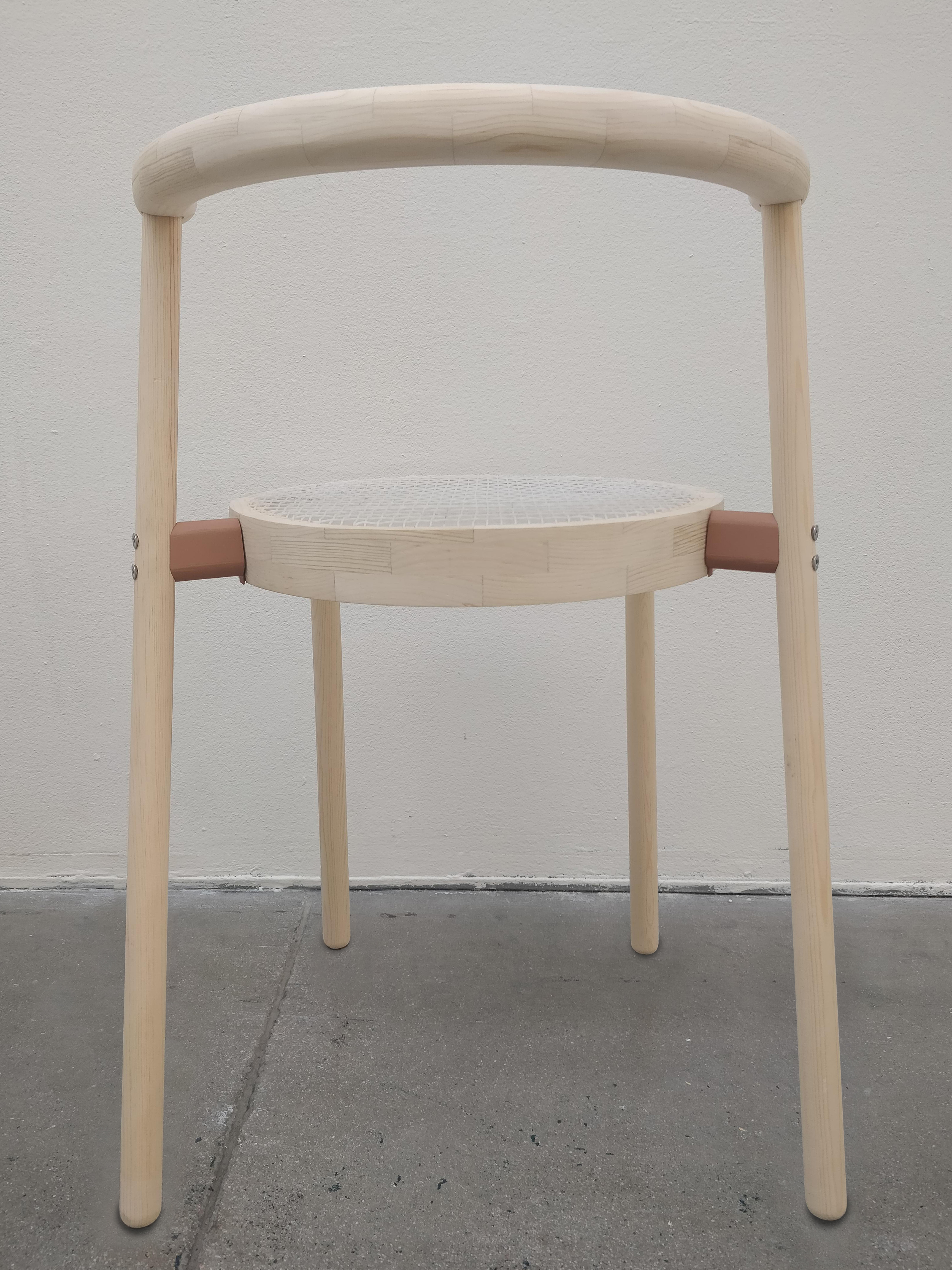


Chair 01
Inspired by the armchair Ch20 Elbow Chair. We want to provide comfort and variability of seating. It can be customized according to users’s individual needs.
The seat is designed for being combined with diverse colors and materials, like rattan, leather, tennis wire and solid wood for this.
Inspired by the armchair Ch20 Elbow Chair. We want to provide comfort and variability of seating. It can be customized according to users’s individual needs.
The seat is designed for being combined with diverse colors and materials, like rattan, leather, tennis wire and solid wood for this.
Chair 00
Our first prototyping, this model is all 3D printed and combined with a leather seat.
![]()
![]()
![]()
![]()
![]()
![]()
Our first prototyping, this model is all 3D printed and combined with a leather seat.

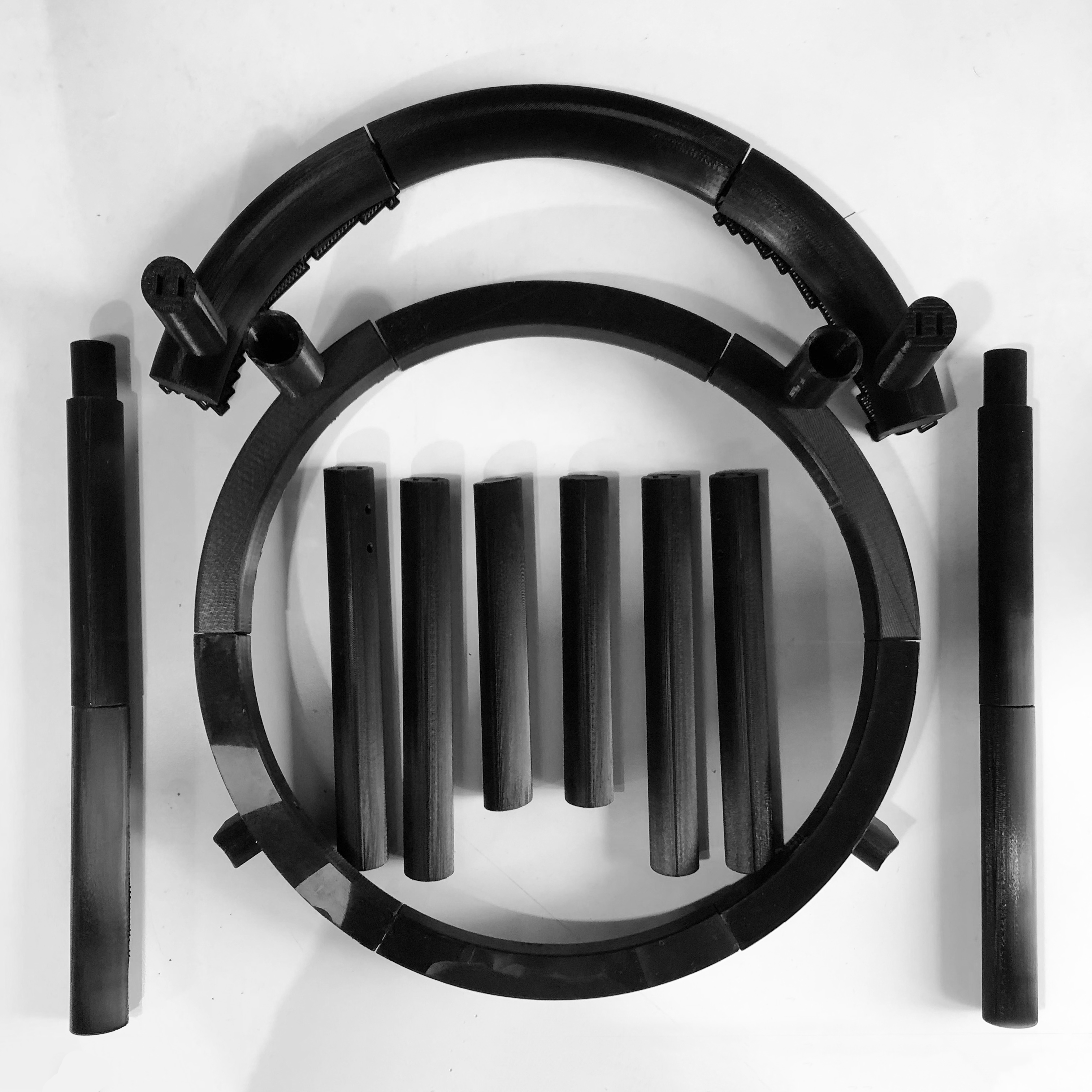
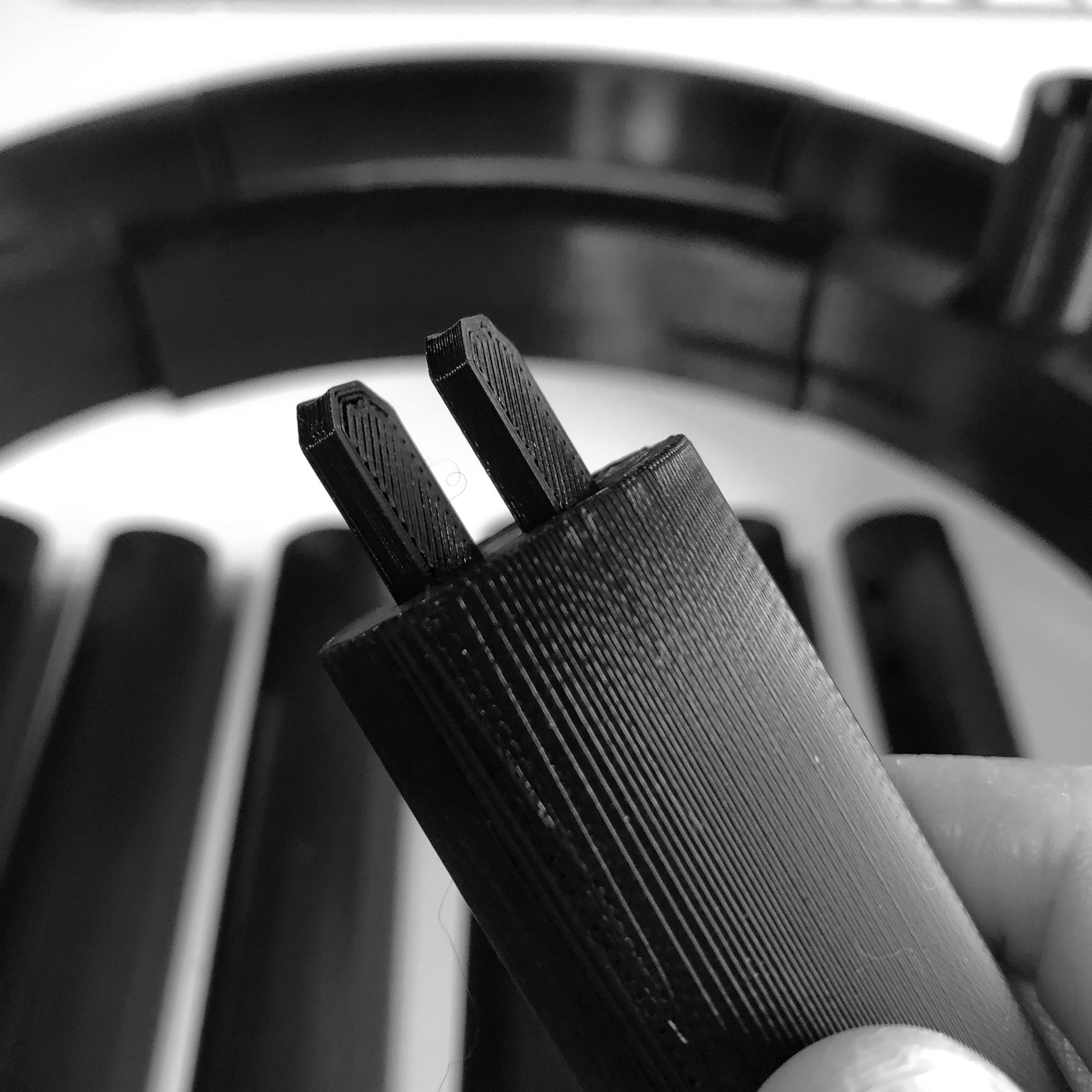
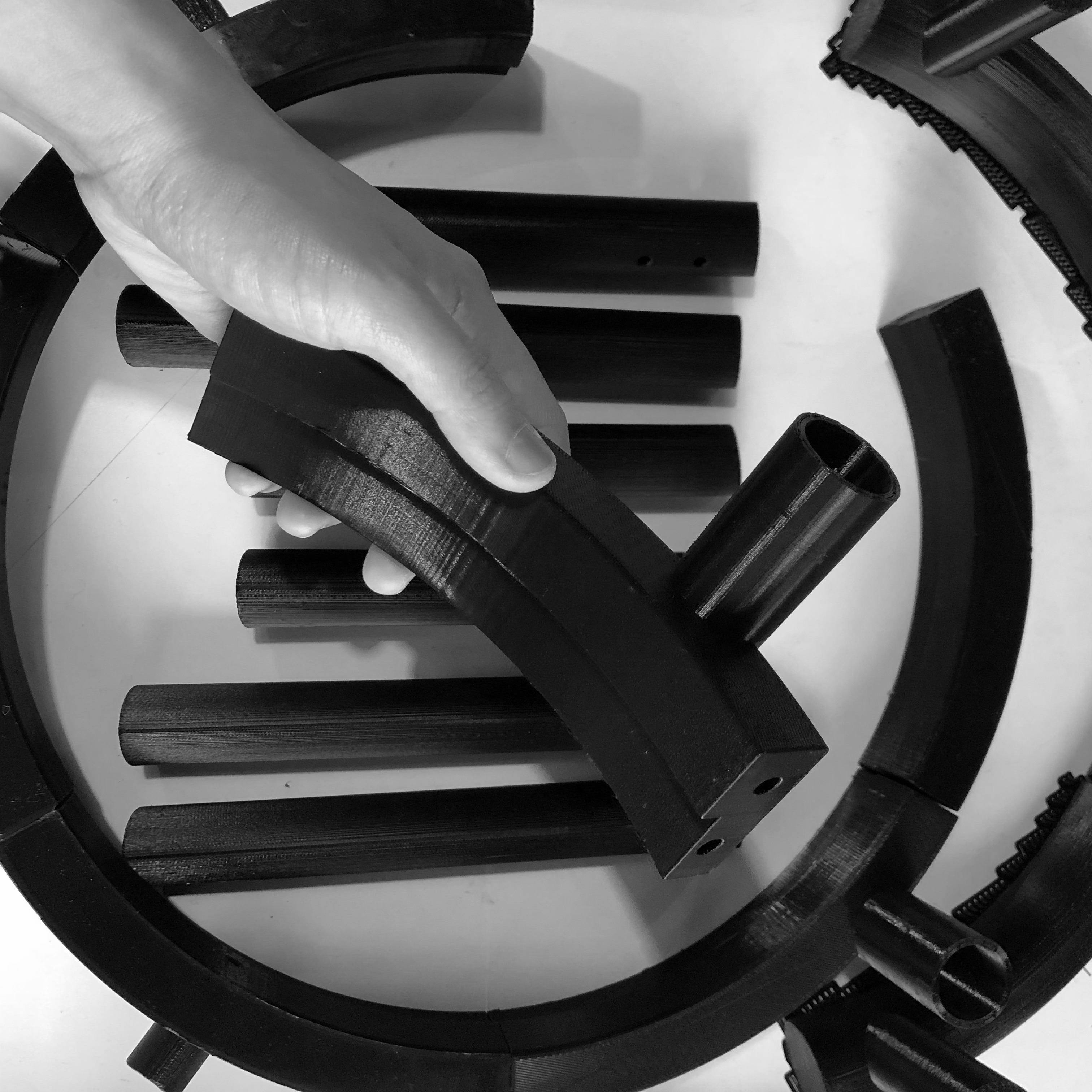



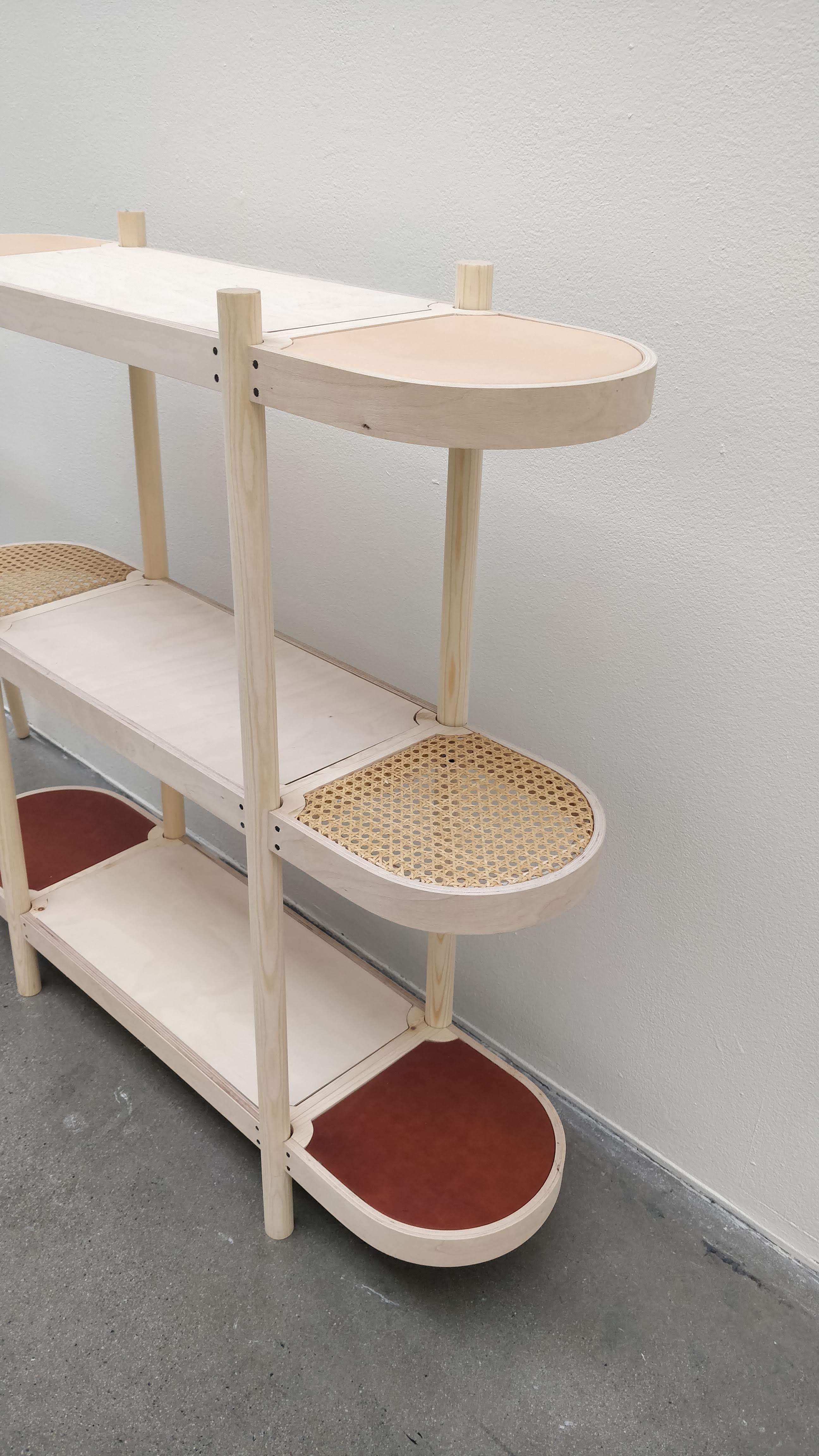


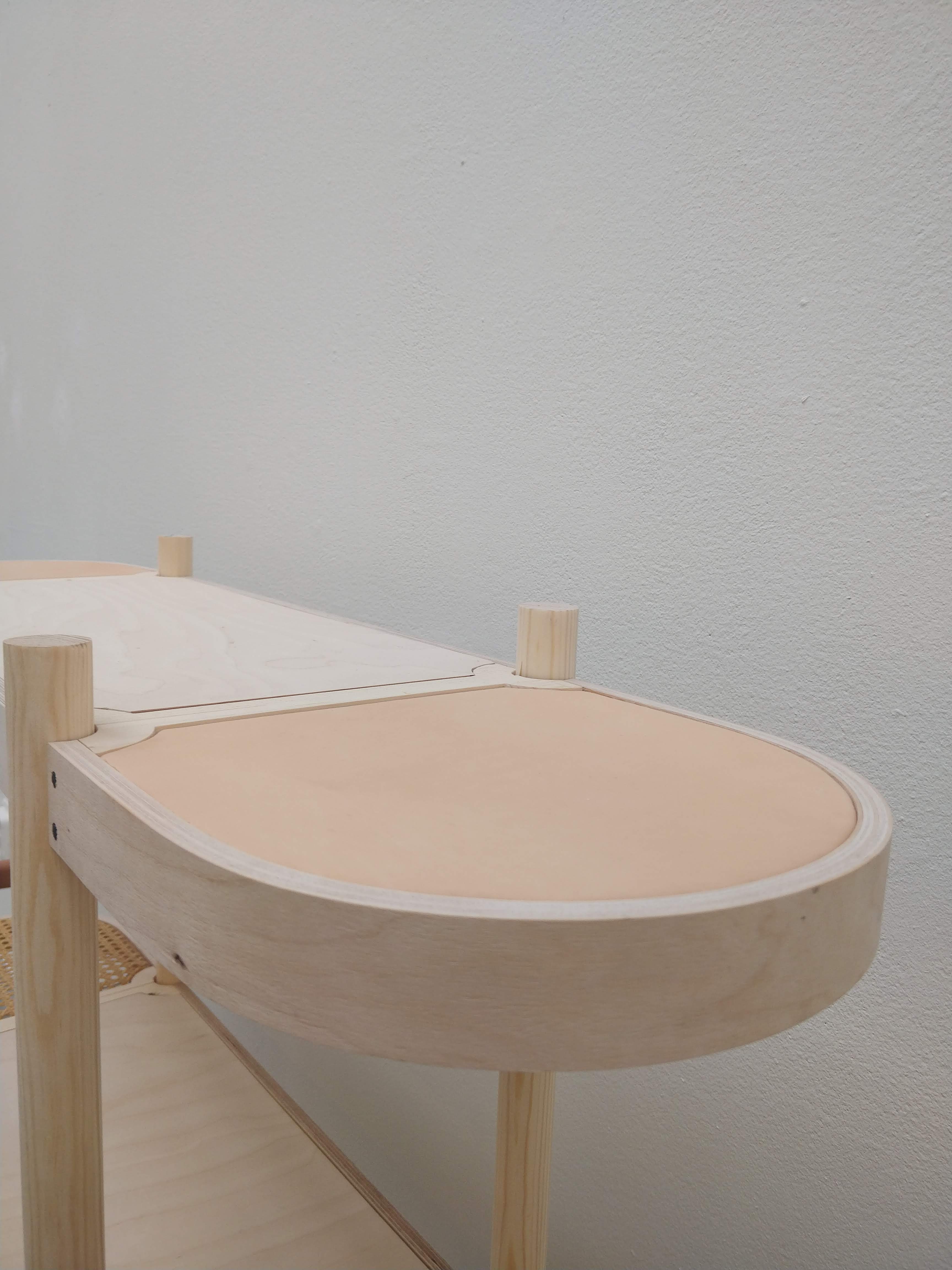

Shelf 01
As an easy way to integrate some furniture in different interiors, this shelf is easy to assemble and disassemble, and thus allow the user to change the different levels and their materials depending onwhat they need or want.

Cooperate with Lola Mijouin.

Lördagsgodis @ Konstfack
Second Trial: 2017.12.2/3
Konstfack Christmas Market Table No.57
First Trial: 2017.11.5
Konstfack Halloween Party
What if we change our unit of time. We used feeling and happiness to find another way to represent the day. I held a workshop and invite participants to use the materials I collected and build a model for their day.
I also start an experiment for inviting everyone to slice a piece of candy to measure their Saturday which I learned from the Swedish culture. Use a different way to understand time might be a chance to explore how people feel about time.
The concept of this project and the purpose of those prototypes aim to explore time and myself. Also I use self answering question to find my own statement. But time is still a big issue for me. What, then, is time? If no one asks me, I know what it is. If I wish to explain it to him who asks me, I do not know yet.